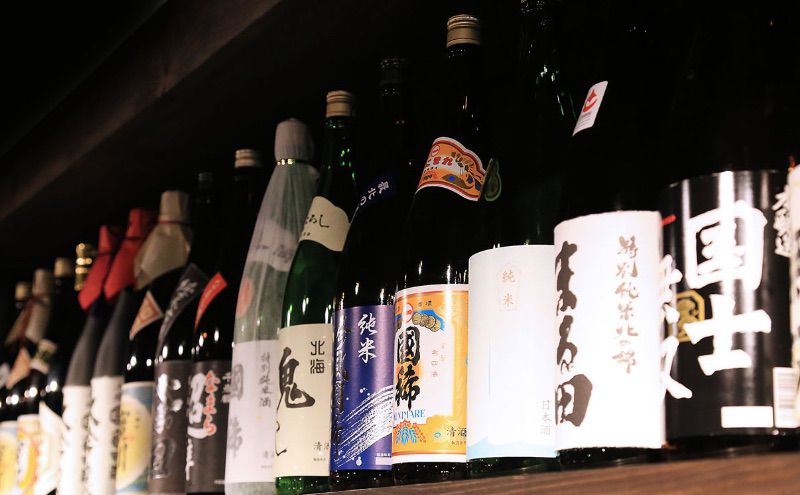Hokkaido Culture Column

Inside the world of Japanese sake
The evolution of a process using water and specially bred Hokkaido rice

vol.1
Fun fact: Sake is good for you!
In recent years, sake has made a name for itself outside Japan, with people enjoying it in many countries around the world.
Its history in Japan is said to span over 1,000 years, and the culture around it is unique to Japan.
Japanese people have honed the brewing process over the years, identifying the best ingredients and techniques and constantly studying and improving the methods involved.
The result of this unique process is a drink that is said to be one of the healthiest of all alcoholic beverages.
More nutritious than you knew!

Production method
Alcoholic beverages are made in three different ways: fermenting, distilling and mixing.
| Fermenting | Sugars from the ingredients (or converted from starch in the ingredients) are fermented using yeast. | Sake, beer, wine, etc. |
|---|---|---|
| Distilling | A fermented drink is distilled. | Shochu (Japanese spirits), whisky, brandy, etc. |
| Mixing | Secondary ingredients such as fruit or spices are mixed into a fermented or distilled drink. | Umeshu (plum liqueur) and other liqueurs |
Sake is a fermented drink. Fermented drinks do not lose their nutrients during preparation of the ingredients and the fermentation process, so the benefits of these nutrients can be enjoyed when drinking these beverages.
Ingredients
Fermented drinks are made with various nutritious ingredients.
| Sake | Rice or malted rice |
|---|---|
| Beer | Barley |
| Wine | Grapes |
The nutrients that sake retains from its ingredients include amino acids, vitamins, peptides and minerals. It is particularly rich in amino acids, with studies showing that it contains 10 to 20 times more than wine.
Some experts say that there are over 700 different nutrients in sake.

The health benefits of sake
Appetite
Sake contains essential amino acids that are not produced by the body. Along with ethyl alcohol, the main component of sake, these amino acids promote the production of stomach acids that are necessary for a healthy appetite.
This is why sake is often enjoyed before a meal.
Circulation
If you’ve tried sake, you may have noticed that you feel warm after drinking it. That’s because of a component called adenosine, which prevents constriction of the blood vessels, improving circulation.
Good circulation relieves tension in the shoulders and other muscles and prevents sensitivity to cold.
Skincare
In recent years, sake has been used in cosmetics and bath products for its natural effects on the skin.
Sake contains a polyphenol called ferulic acid, which has been found to reduce wrinkles and other effects of aging, in addition to having an antioxidant effect.

The best way to drink sake

Amount
While it provides many health benefits, it’s important to remember that sake is still an alcohol drink, so moderation is needed. Alcohol tolerance differs from person to person, but the average person should drink no more than 1-2 tokkuri (a flask holding around 180ml) per day.
Drink water between servings (yawaragi-mizu)
Just as it’s common to drink a chaser with wine or whisky, Japanese people drink water between servings of sake. This is called yawaragi-mizu (“water to ease the effects”), and prevents the negative effects of drinking alcohol, such as hangovers and dehydration.
It’s common to have a 1:1 ratio between sake and water.
Meals
Sake tastes even better with food, and it goes well with a variety of dishes. Like other parts of Japan, many restaurants in Hokkaido serve sake with meals.
Be sure to ask the staff which sake they recommend with the meal you’re ordering – you can learn a lot about sake that way!
| HP | http://www.hokkaido-sake.or.jp/en/ |
|---|